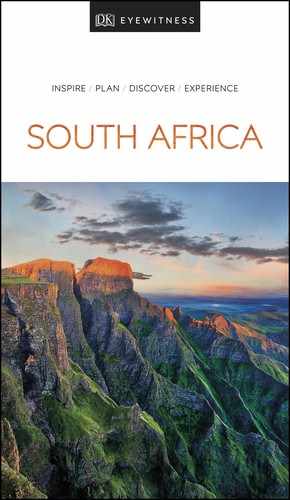South Africa's
Political History
For most visitors to South Africa, it’s the recent past – the iniquity of apartheid and its resolution under the guidance of Nelson Mandela – that holds the most resonance, but sites reflecting the country’s rich colonial legacy and the battles that helped shape its present also repay exploration.

t The Cape Dutch Manor House at the Groot Constantia wine estate
Colonial Architecture
The Western Cape has the country’s longest history of European settlement, making it a natural starting place for exploring South Africa’s colonial legacy. Visit Cape Town’s Castle of Good Hope or take a tour of the attractive Cape Dutch homesteads sprinkled throughout Stellenbosch and the Winelands. Elsewhere, you can admire the simple 1820 Settlers architecture in Grahamstown or explore Pretoria’s grandiose late 19th-century landmarks.
Battlefields Route
Northern KwaZulu-Natal was the site of several key battles in the 19th century. Learn about these campaigns on the Battlefields Route, whose sites include Blood River, where heavily armed Boers felled 3,000 Zulus; Isandlwana, where Britain suffered its most humiliating defeat by an African foe; and Rorke’s Drift, a British victory immortalized in the film Zulu (1964).
Remembering Apartheid
“Today, apartheid is exactly where it belongs: in a museum.” This is the motto of the superb Apartheid Museum in Johannesburg, which randomly allocates visitors a “white” or “non-white” ticket to determine where they enter. Other museums reflecting on this dark period include Cape Town’s District Six Museum and Soweto’s Hector Pieterson Museum.
The Mandela Legacy
One of the 20th century’s most inspirational leaders, Nelson Mandela left an enduring legacy. Visit his birthplace in Qunu (Mandela and the Wild Coast), stand at the site near Howick where he was captured by police in 1962, see inside his cramped cell on Robben Island and commemorate his presidential inauguration at Pretoria’s Union Buildings.
The Voortrekker Monument
Standing sentinel outside Pretoria, this granite monolith was built in the 1940s as a monument to the 19th-century Great Trek, in which thousands of Dutch settlers migrated inland to set up their own territory (Voortrekker Monument). Viewed from a 21st-century perspective, it remains an informative tribute to the pioneers for whom it is named, but it cannot easily be dissociated from the Afrikaner nationalism that led to the imposition of apartheid.
